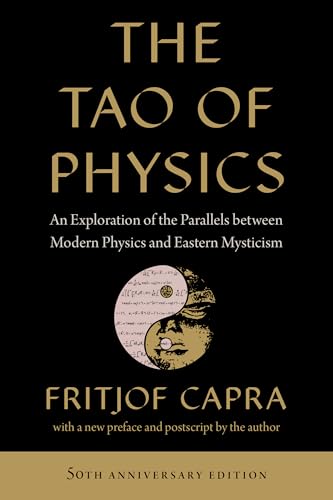The Tao of Physics: An Exploration of the Parallels between Modern Physics and Eastern Mysticism
amazon.com
The Tao of Physics: An Exploration of the Parallels between Modern Physics and Eastern Mysticism

This property of matter and of light is very strange. It seems impossible to accept that something can be, at the same time, a particle—that is, an entity confined to a very small volume—and a wave, which is spread out over a large region of space. This contradiction gave rise to most of the koan-like paradoxes which finally led to the formulation
... See moreSoon after the emergence of this “planetary” model of the atom, it was discovered that the number of electrons in the atoms of an element determine the element’s chemical properties, and today we know that the whole periodic table of elements can be built up by successively adding protons and neutrons to the nucleus of the lightest
... See moreAn atom, therefore, is extremely small compared to macroscopic objects, but it is huge compared to the nucleus in its center. In our picture of cherry-sized atoms, the nucleus of an atom will be so small that we will not be able to see it. If we blew up the atom to the size of a football, or even to room size, the nucleus would still be too small
... See moreThe concepts of space and time are so basic for the description of natural phenomena that their modification entails a modification of the whole framework that we use to describe nature. The most important consequence of this modification is the realization that mass is nothing but a form of energy. Even an object at rest has energy stored in its
... See moreAccording to relativity theory, space is not three-dimensional and time is not a separate entity. Both are intimately connected and form a four-dimensional continuum, “space-time.” In relativity theory, therefore, we can never talk about space without talking about time and vice versa. Furthermore, there is no universal flow of time as in the
... See moreEinstein strongly believed in nature’s inherent harmony and his deepest concern throughout his scientific life was to find a unified foundation of physics. He began to move toward this goal by constructing a common framework for electrodynamics and mechanics, the two separate theories of classical physics. This framework is known as the special
... See moreAt the beginning of modern physics stands the extraordinary intellectual feat of one man: Albert Einstein. In two articles, both published in 1905, Einstein initiated two revolutionary trends of thought. One was his special theory of relativity, the other was a new way of looking at electromagnetic radiation which was to become characteristic of
... See moreAt the beginning of the twentieth century, then, physicists had two successful theories which applied to different phenomena: Newton’s mechanics and Maxwell’s electrodynamics. Thus the Newtonian model had ceased to be the basis of all physics. Modern Physics The first three decades of our century changed the whole situation in physics radically.
... See moreThe culmination of this theory, called electrodynamics, was the realization that light is nothing but a rapidly alternating electromagnetic field traveling through space in the form of waves. Today we know that radio waves, light waves, or X-rays are all electromagnetic waves, oscillating electric and magnetic fields differing only in the frequency
... See more